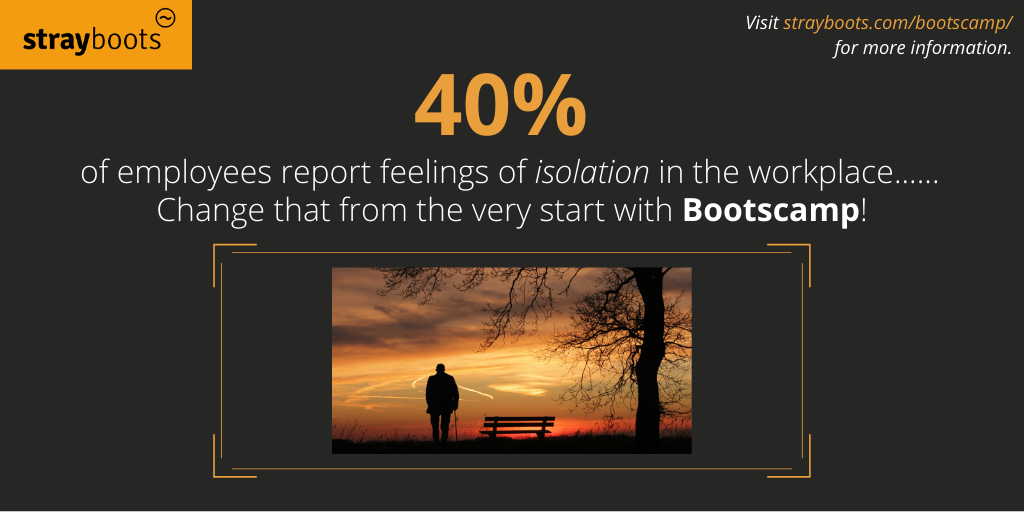How Some Companies are Getting Creative…
What began in the 1970s as organizational socialization – the period of learning and adjusting to a new role – is now known as onboarding. Over the years we have seen the process of onboarding expand from simple new hire paperwork and other transactional items into more of a culture and productivity-boosting tool, especially in large organizations with robust learning and development programs.
Today, in forward-thinking organizations, the onboarding period is seen as one of the most important times to engage employees, introduce them to the company culture, and start on the right foot. This is especially important in today’s tight job market. Resignations during the first months of employment are not uncommon; one study reported almost 30% of job seekers have left a job within 90 days of starting. Early attrition is painful as it prevents employers from recouping any of the significant investments often associated with hiring.

Bootscamp – Your Onboarding Solution
With unemployment at a record low, attrition is rising (41 million people quit in 2018, up by 8% from 2017…by 2020 this could jump to 47 million, or 1 in 3 workers), companies are getting more creative with their onboarding programs to boost retention. Here are some of the trends:
- Preboarding: the time before onboarding – or “preboarding” — is often neglected in the hiring process. Pre-boarding starts and is completed before a new hire sets foot in the office; it often includes paperwork, logistics, and it can also include informal interactions between the company and new hire. In the race to keep employees, every moment counts, including the moments before they show up for their first day. The days before a start date can be emotional – a time of excitement but also trepidation – as well as difficult for reasons including logistics like re-location, finding new schools for kids, and so on. Strong and effective communications during this critical, difficult time can help to solidify the employer/employee relationship long term. Savvy companies are beginning to pay more attention to preboarding.
- Personalizing: today’s technology allows for very personal onboarding experiences that are tailored to the individual needs of each new employee.
- Cultural Assimilation: In the race to keep employees, communicating a company’s unique culture is more important than ever. Activities to ensure cultural assimilation are on the rise, and these include scavenger hunts and other creative activities (in fact, demand for these experiences during the onboarding phase is the reason we recently launched Bootscamp our service tailored to onboarding!)
- Microlearning: Already an important part of many corporate training programs, microlearning is also taking center stage during onboarding.
- Coaching: Mentors are playing a more central role in the onboarding process. Companies are seeking to match new recruits with mentors earlier and earlier in the recruit’s tenure, due to the positive impact that mentoring can have on employees. A study conducted by Gartner found that retention rates were higher for both mentees (22% more) and mentors (20% more) than for employees who did not participate in a mentoring program
- Longer Timetables: A small but growing percentage of companies extend onboarding programs to beyond one year; this is because research indicates that it can take up to 8 months or more for a newly hired employee to reach the same level of productivity as an existing team member. Implementing protracted onboarding programs can offer many benefits including giving recruits a longer runway, and more resources, to help them find their feet.
Despite all of these advances, challenges remain. For example, many onboarding programs are focused extensively on the use of digital learning platforms; employees must sit and scroll through hours of training videos, take online quizzes, etc.
While these platforms can be very effective, an over-reliance on computerized-onboarding – keeping employees inert and sitting for long hours–can contribute to feelings of isolation (around 40% of employees feeling isolated in the workplace, according to a survey by Ernst & Young). Augmenting digital learning with team-building activities that incorporate movement and socialization can dramatically enhance a new recruit’s experience during their first days and weeks at their new work home.




